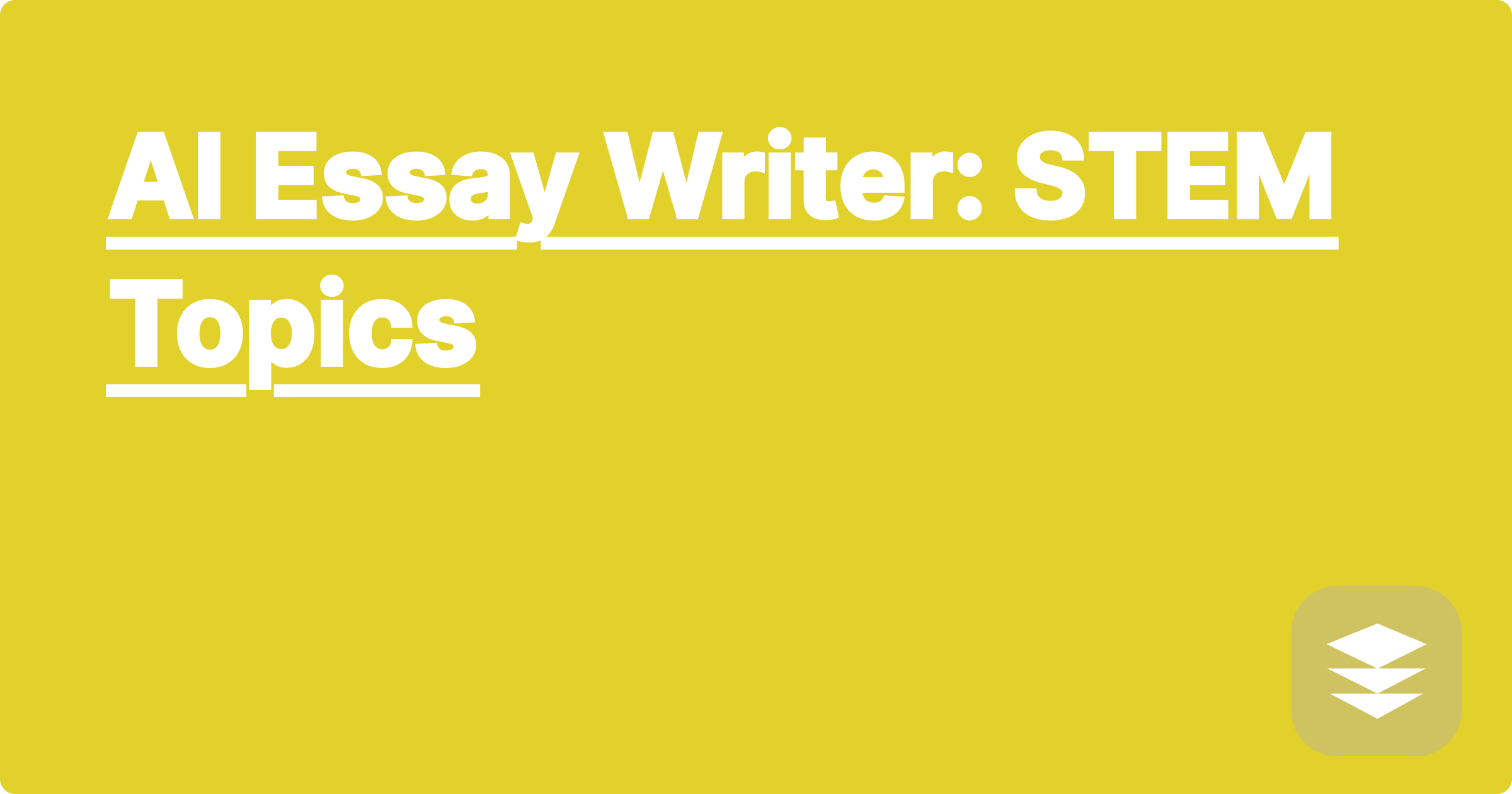
The demanding nature of STEM fields often presents a significant challenge for students and researchers: effectively communicating complex ideas in written form. Balancing rigorous coursework, research commitments, and the pressure to publish can leave little time for crafting polished essays and reports. This is where the power of artificial intelligence can step in to offer valuable support. AI writing tools, when used strategically, can become invaluable partners in navigating the complexities of STEM writing, enabling students and researchers to articulate their findings with clarity and efficiency.
This emerging technology is not about replacing human intellect but rather augmenting it. For STEM students, AI writing assistance can be a game-changer, helping them structure arguments, refine technical language, and ultimately present their work in a more compelling and accessible manner. For seasoned researchers, these tools can streamline the writing process, allowing them to focus on the core scientific contributions while ensuring that their publications meet the highest standards of academic rigor. Understanding how to leverage these tools effectively is becoming an increasingly important skill for success in the competitive landscape of STEM.
STEM writing presents unique challenges that extend beyond the typical difficulties of academic composition. It demands a high level of precision and clarity to convey complex technical information accurately. Often, this involves explaining intricate theories, describing experimental procedures with meticulous detail, and presenting data analysis in a logical and understandable way. The language of STEM is often highly specialized, requiring a deep understanding of terminology and conventions specific to each discipline. Furthermore, STEM writing often requires the seamless integration of mathematical equations, formulas, and code snippets, adding another layer of complexity to the writing process. These combined challenges can make STEM writing a daunting task, even for experienced researchers. Students, particularly those new to the field, can feel overwhelmed by the sheer volume of information they need to process and communicate effectively.
AI writing tools, such as ChatGPT, Claude, and Wolfram Alpha, offer a powerful solution to the challenges of STEM writing. These tools can assist with various aspects of the writing process, from generating initial drafts and refining sentence structure to ensuring consistent terminology and formatting. ChatGPT and Claude, for instance, are adept at understanding context and generating coherent text, making them valuable for drafting introductions, explaining complex concepts, and summarizing findings. Wolfram Alpha excels at handling computational tasks, making it ideal for verifying calculations, generating plots, and even providing step-by-step solutions to mathematical problems. By integrating these tools into their workflow, STEM students and researchers can significantly enhance their writing efficiency and improve the overall quality of their work.
Begin by clearly defining the scope and purpose of your writing task. Are you drafting a research paper, preparing a lab report, or writing a grant proposal? Once you have a clear understanding of your objective, choose the AI tool that best suits your needs. For example, if you need help structuring your argument, ChatGPT or Claude might be suitable. If you need to generate complex equations or perform calculations, Wolfram Alpha would be a better choice. Next, input the necessary information into the chosen tool. This might include keywords, existing text, or specific instructions. Experiment with different prompts and parameters to refine the output. Carefully review and edit the generated text to ensure accuracy and coherence. Remember that AI tools are assistants, not replacements for human judgment. Finally, integrate the AI-generated content into your overall writing process. Use it as a starting point, a source of inspiration, or a tool for refining specific sections of your work.
Consider a scenario where a student needs to explain the concept of Newton's Second Law of Motion in an essay. They could use ChatGPT and prompt it with something like, "Explain Newton's Second Law of Motion and provide an example." The AI might generate a paragraph explaining that the law states Force equals mass times acceleration (F=ma) and provide an example such as calculating the force required to accelerate a 10kg object at 2 m/s². Alternatively, a researcher might use Wolfram Alpha to generate a complex equation related to fluid dynamics. By inputting the relevant parameters, the researcher could obtain the desired equation in a formatted, ready-to-use format for their publication. In another instance, a student struggling with the introduction to their lab report could use Claude to rephrase and refine their initial draft, improving clarity and conciseness.
To effectively leverage AI in STEM education and research, it's crucial to develop a discerning approach. Always critically evaluate the output generated by AI tools. Verify the accuracy of information, ensure logical coherence, and refine the language to match the specific requirements of your academic discipline. Treat AI as a collaborative partner, using it to augment your own understanding and writing skills. Don't rely solely on AI for generating entire pieces of work. Instead, focus on using it to enhance specific aspects of your writing process, such as brainstorming ideas, structuring arguments, or refining technical language. Experiment with different AI tools and prompts to discover what works best for your individual needs and writing style. By integrating AI strategically and responsibly, you can significantly improve your writing efficiency and achieve greater academic success.
To move forward, embrace experimentation and continuous learning. Explore the various AI tools available and discover how they can best support your individual STEM writing needs. Practice integrating these tools into your workflow and develop a critical eye for evaluating AI-generated content. Remember that the effective use of AI in academic writing is a skill that develops over time through practice and thoughtful engagement. By embracing these tools responsibly and ethically, you can unlock their full potential to enhance your communication skills and achieve greater success in your STEM endeavors.
AI Robotics: Simulation & Design
Chemistry AI: Study & Practice
Bio AI Solver: Biology Problems